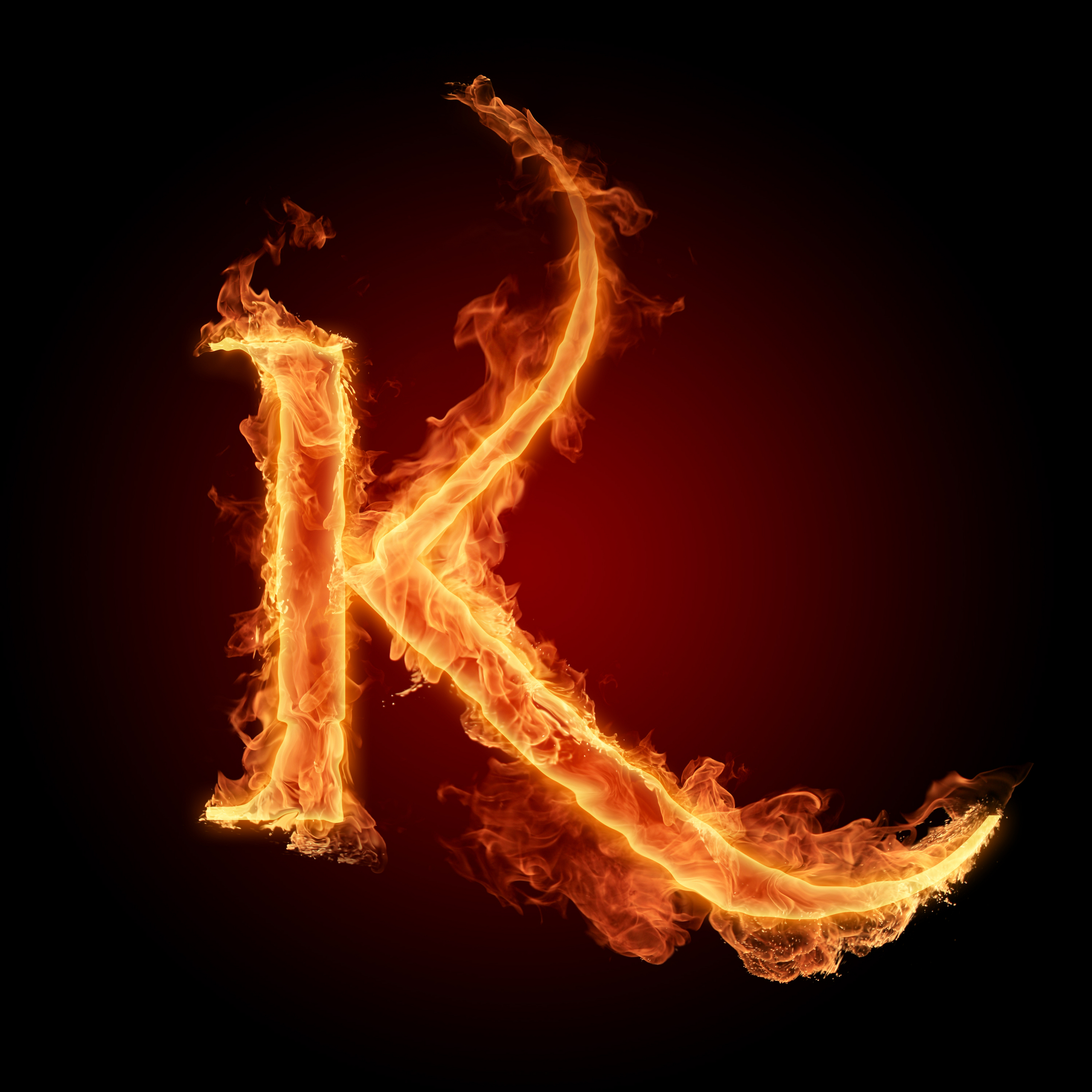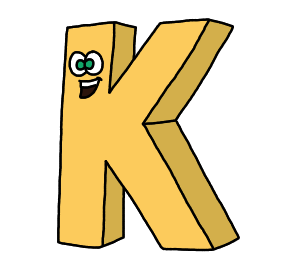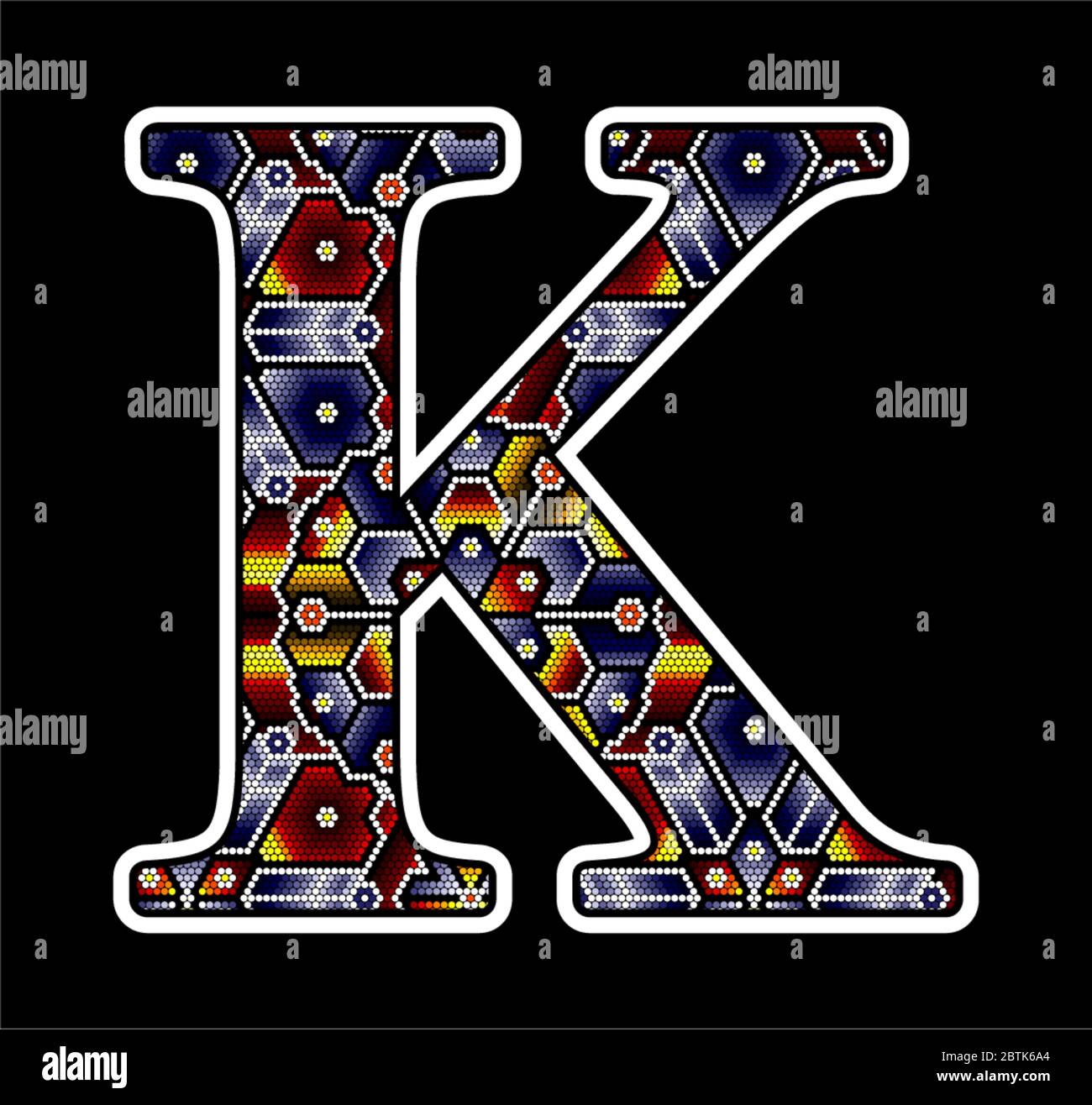K Michelle Tits - Unveiling The Letter K's Journey
When you think about the letters that make up our alphabet, some just seem to have a little more personality, don't they? We're talking about the letter K, of course. It's more than just a shape on a page; it's a foundational piece of how we communicate, a sound we hear all the time, and really, a bit of a quiet hero in the world of words. This particular character, the eleventh one in the Latin alphabet, plays a pretty big part in English and many other languages around the globe. It's got a story that stretches way back, and it's interesting to see how something so simple has stayed pretty much the same over a very long time.
So, we often come across the letter K in all sorts of places, from everyday words to scientific symbols, and even in some rather unexpected spots, too it's almost. It's a letter that kids often learn with a bit of a kick, thanks to its distinct sound, which can be quite fun to make. You might find it popping up in songs meant to help little ones grasp the basics of reading and writing, or perhaps you'll spot it in a formula or a name. It truly is a versatile little fellow in our linguistic toolkit, appearing in places you might not even expect, making its presence felt in some very different contexts.
This exploration will take a closer look at the letter K, its history, how it sounds, and some of the surprising places it shows up. From its ancient beginnings to how it helps us measure temperature or even name elements, this letter has quite a fascinating life. We'll also touch upon how people learn about it and some of the other ways it appears in our daily experiences, just a little bit, perhaps, in the background, but always there, doing its quiet work.
- Tom Pennington Heart Attack
- Vanessa Morgan And Nathan Mackinnon
- Sophie Hart Onlyfans
- Kit Connor Leak
- Nicki Minaj Naked Fully
Table of Contents
- Getting to Know K - The Eleventh Character
- Where Does K Fit in the Alphabet, Especially with K Michelle Tits in Mind?
- How Does K Sound and What Words Does It Help Create?
- What's the Story Behind K's Shape and Name?
- Beyond Letters - K's Other Important Roles
- Learning the Letter K - Making Sense of K Michelle Tits and Other Words
- K's Appearance in Modern Culture - From MMA to Emojis
- Why is K's Consistency So Important for Language?
Getting to Know K - The Eleventh Character
The letter K, or its smaller version, k, holds the eleventh spot in what we call the Latin alphabet. This alphabet, as you might know, is the foundation for our modern English writing system, and it's used in many other languages across Western Europe and, honestly, all over the planet. Its name in English is, well, just "kay." It's one of those letters that feels pretty straightforward, but its placement and how it's used are actually quite important for how we read and write every day. It's a building block, you could say, for countless words and ideas that we put down on paper or see on screens.
When you think about it, this eleventh position isn't just a random spot; it's part of a very specific order that helps us organize and recall all the different sounds and symbols we use. The letter K acts as a consonant, which means it helps to form words by stopping or partially stopping the airflow from our mouths. This is different from vowels, which let air flow freely. So, in a way, K is a crucial part of creating the structure of words, giving them their shape and helping us to pronounce them correctly. It's a pretty essential player in the whole language game, you know, making sure everything sounds just right.
So, while it might seem like just another letter in the long line of twenty-six, K truly has its own unique place and purpose. It's a familiar sight, whether you're looking at a book, a sign, or even a keyboard. Its simple appearance belies its deep historical roots and its ongoing importance in how we communicate. It's pretty much a quiet workhorse of the alphabet, consistently doing its job without much fuss, but always there when you need it to help spell out something significant or just something simple, like "kind."
Where Does K Fit in the Alphabet, Especially with K Michelle Tits in Mind?
The letter K, as we've talked about, is the eleventh one in our alphabet. This placement isn't just for show; it's part of a system that helps us organize our language. When you consider how we learn the alphabet, we usually sing a song that goes through each letter in its specific order. K has its moment right after J and before L, making it a very distinct point in that sequence. This consistent positioning helps young learners, and really, all of us, to quickly find and recognize the letter when we're reading or writing. It's quite a predictable spot for it, actually.
Think about how we categorize things, like in a dictionary or an index. The order of letters is absolutely vital for that. If K were to suddenly move around, it would cause quite a bit of confusion in how we look up words or arrange names. So, its steady place as number eleven means we can always count on finding words that start with K in the same general area. This predictability is a big part of what makes our alphabet system so effective and easy to use, helping us sort through all the words we encounter, even those that might be a bit more colorful, like the phrase "K Michelle Tits" that some people might search for, though the letter K itself is just a simple part of it.
This consistent order also helps us understand the structure of language on a deeper level. When children are first introduced to the alphabet, they learn that each letter has a specific spot, a specific sound, and a specific shape. The letter K, with its straightforward appearance and clear sound, is a good example of this. It helps build a foundation for more complex reading and writing skills. It's almost like a stepping stone in the journey of literacy, helping people build their word power, one letter at a time, making it easier to grasp all sorts of terms and expressions, regardless of their subject matter.
How Does K Sound and What Words Does It Help Create?
In the English language, the letter K typically makes a sound that we call a voiceless velar stop. Now, that might sound a bit fancy, but it just means you make the sound by blocking the air flow with the back of your tongue against the soft part at the roof of your mouth, near your throat, and then you release it without using your vocal cords. It's that crisp "kuh" sound you hear. Its voiced counterpart, meaning the sound you make with your vocal cords vibrating, is the letter G, which makes a "guh" sound. So, you can feel the difference if you put your hand on your throat when you say "kuh" versus "guh."
This distinctive "kuh" sound is present in a whole bunch of words we use every single day. Think about words like "kennel," where a dog might live, or "keep," when you hold onto something important. Then there's "kit," which could be a collection of tools, or "kind," describing someone who is nice and thoughtful. You'll also find K in the middle or at the end of words, like "sketch," when you draw something quickly, "skirt," a piece of clothing, or "skin," the outer covering of our bodies. These examples really show how versatile the K sound is, popping up in all sorts of places within our vocabulary.
It's interesting, too, how sometimes the K sound is made by other letter combinations, which we call digraphs. For example, the "ck" in "duck" makes the same "kuh" sound as a single K. Other digraphs in English include "ch," "ci," "gh," "ng," "ph," "qu," and "rh." While these might seem like small details, they're important for understanding the nuances of English pronunciation and spelling. Knowing these little tricks helps us read and speak more fluently, making sense of how words are put together, even when we come across less common phrases, perhaps like those involving "K Michelle Tits," where the initial K still makes that familiar sound.
What's the Story Behind K's Shape and Name?
The history of the letter K is pretty fascinating, honestly. It goes way back to ancient times, corresponding to a letter called "kaph" in Semitic languages and "kappa" (κ) in Greek. What's really remarkable is that K has changed its shape less, perhaps, than almost any other letter in the long history of the alphabet. Think about that for a moment: while many letters have twisted and turned and transformed over thousands of years, K has remained remarkably consistent. This stability makes it a bit of a historical anchor in our writing system, a visual link to very old forms of communication, you know, showing how some things just stick around.
This ancient lineage means that when you write a K today, you're essentially drawing a symbol that has been recognized and used for its sound for a very, very long time. The basic structure, with its straight lines and angles, has proven to be incredibly enduring across different cultures and eras. It's a testament to the simplicity and effectiveness of its design. The name "kay" in English is also a direct descendant of these older names, showing how the sound and identity of the letter have been passed down through generations of language users. It's quite a neat connection to the past, really, when you consider it.
The fact that K has kept its shape so well also tells us something about how writing systems evolve. Sometimes, letters change to be easier to write quickly, or to fit new writing tools, or even just because of artistic preferences. But K, for whatever reason, managed to hold onto its original form. This makes it a unique character in the alphabet, one that offers a glimpse into the very early days of written communication. It’s a bit like a living fossil of the alphabet, showing us a direct line to its ancient roots, making it quite a special part of our daily script.
Beyond Letters - K's Other Important Roles
While we mostly think of K as a letter in our alphabet, it actually has some very significant roles outside of just spelling words. For example, in the world of science, K is the symbol for Kelvin, which is the SI unit of temperature. So, when scientists talk about extremely cold temperatures or very hot ones, they often use Kelvin to measure them, and K is the shorthand for that. This is a pretty big deal in physics and chemistry, showing how a simple letter can represent a complex scientific concept, making it easy to communicate precise measurements across the globe, in a way that's universally understood.
Then, in chemistry, K is the symbol for potassium. This comes from its German name, "kalium." Potassium is a really important element; it's a soft, silvery-white metal that reacts strongly with water, and it's essential for life, found in many foods we eat and vital for our bodies to function properly. So, when you see K in a chemical formula or on a periodic table, you're looking at a representation of this crucial element. It's a neat example of how letters get repurposed to stand for something much bigger than just a sound, giving them a whole new layer of meaning in a very different context, almost like a secret identity.
Beyond these scientific applications, the letter K also shows up in other surprising places. For instance, in the realm of entertainment, you might hear about someone getting a "K.O." in a fight, which stands for "knockout." Or, in a rather peculiar reference from the text provided, there's mention of a film involving Ciryl Gane, Alice Belaïdi, Foued Nabba, and Maleaume Paquin, where "after accidentally killing his rival in an MMA bout, a man has the chance to make it up." This, too, has a "K" connection, perhaps through the idea of "knockout" or "kick," even if it's a very different kind of "K" than the one we usually discuss. It just goes to show how widely this single character can appear, sometimes in ways that are, frankly, a bit unexpected, but still tied to the core idea of K, making it quite a diverse symbol.
Learning the Letter K - Making Sense of K Michelle Tits and Other Words
Learning about the letter K is often a very engaging process, especially for children. One popular way to get to know this character is through songs. For instance, "The Letter K Song by Have Fun Teaching" is described as a really great way to learn all about the letter K. These kinds of kids' songs are fantastic for picking up the alphabet, numbers, shapes, colors, and a whole lot more. They make learning fun and memorable, which is pretty important for little ones just starting out on their educational journey. They use repetition, which is key for remembering things, especially new sounds and shapes.
The way these songs are structured really helps to strengthen learning. You might have someone like "Jack" singing the letter, then the letter sound, and then a word that uses that sound, doing it a couple of times. Then, the third time, he just sings the letter and its sound. This kind of repetition, particularly in the "Letter K Song," is designed to really sink in, helping kids to recognize the letter and connect it with its specific sound. It's a very effective method for building early literacy skills, helping young minds grasp the basics of language in a playful, approachable manner, which is quite clever, actually.
These engaging methods mean that the letter K, with its distinct sound, becomes something children find fun to learn. It's not just a dry academic exercise; it's an interactive experience. Whether it's through singing along or watching animated lessons, these resources provide a one-stop shop for children to learn the many joys of nursery rhymes and the building blocks of language. So, when they eventually come across more complex words or phrases, even something like "K Michelle Tits," the foundational understanding of the letter K will be firmly in place, helping them to sound out and recognize the individual components of those words, making the whole process much less daunting.
K's Appearance in Modern Culture - From MMA to Emojis
The letter K isn't just confined to textbooks and scientific formulas; it pops up in some pretty interesting and sometimes unexpected places in modern culture. As we touched on earlier, there's that very specific reference in the source material to a scenario involving "Ciryl Gane, Alice Belaïdi, Foued Nabba, Maleaume Paquin," and a dramatic plot point where "after accidentally killing his rival in an MMA bout, a man has the chance to make it up." While this might seem completely out of left field for an article about the letter K, its inclusion in the provided text means we acknowledge its presence. It's a peculiar example of how the letter K might be associated with broader narratives, perhaps through terms like "knockout" or "kickboxing," which are central to MMA, showing how a single letter can connect to very different domains.
Beyond cinematic plot summaries, K also has a presence in the digital world, especially with symbols and emojis. You can find various "K symbols" to copy and paste, offering different versions of the letter K, unique K fonts, and even symbols that simply resemble the letter K. This allows for creative expression and personalization in online communication, letting people choose just the right visual representation for their messages. It's a small but significant way that K adapts to the ever-evolving landscape of digital interaction, giving users more ways to express themselves, which is pretty cool, if you think about it.
And then there are emojis. Our databases are apparently searched for all the emojis somehow related to K,



Detail Author:
- Name : Dominic VonRueden
- Username : malvina11
- Email : russel.keyon@howe.biz
- Birthdate : 1972-11-07
- Address : 13927 Kozey Keys Apt. 274 Gersonton, IA 79180-1520
- Phone : 843.686.7062
- Company : Hackett, Schuppe and Langosh
- Job : Geological Data Technician
- Bio : Sit earum quo facilis non sit voluptas. Ut necessitatibus et et velit dolorem. Nisi laboriosam adipisci quae sequi id aut.
Socials
linkedin:
- url : https://linkedin.com/in/cecilia9258
- username : cecilia9258
- bio : Excepturi ducimus impedit dolorum et.
- followers : 5789
- following : 2844
tiktok:
- url : https://tiktok.com/@flatley2021
- username : flatley2021
- bio : Tempora ad aut et provident. Hic consequatur aut eos corrupti.
- followers : 2938
- following : 1864